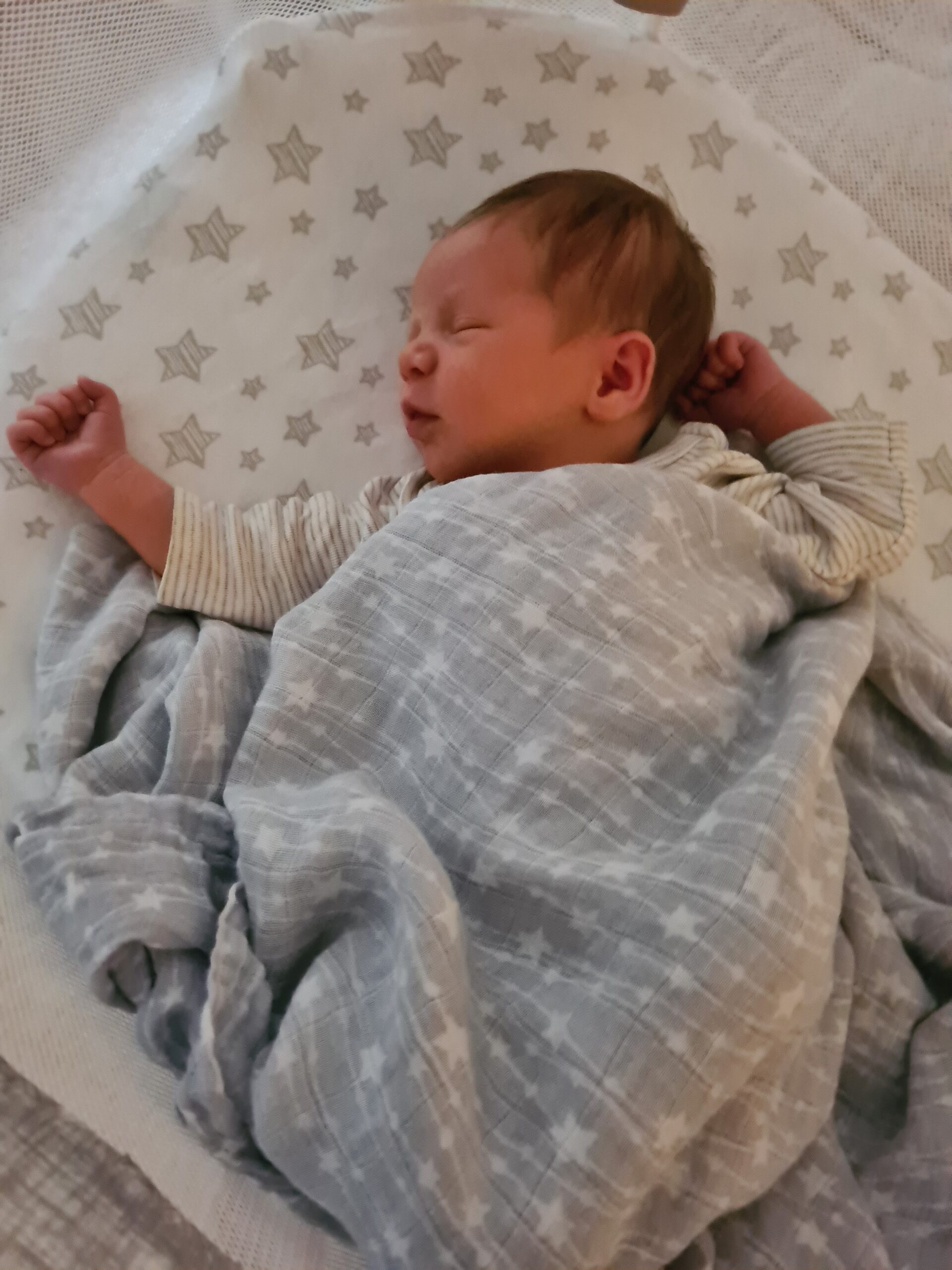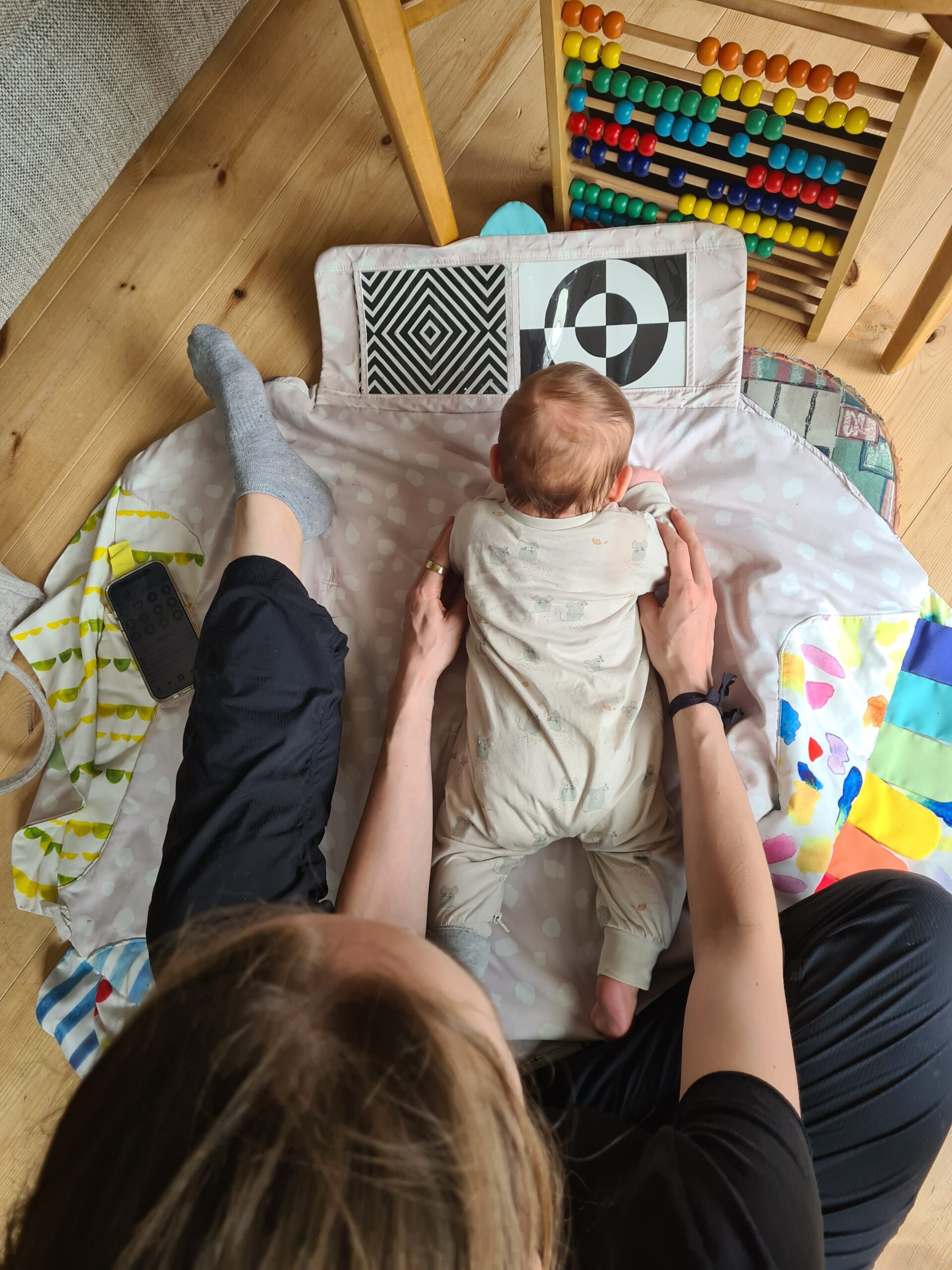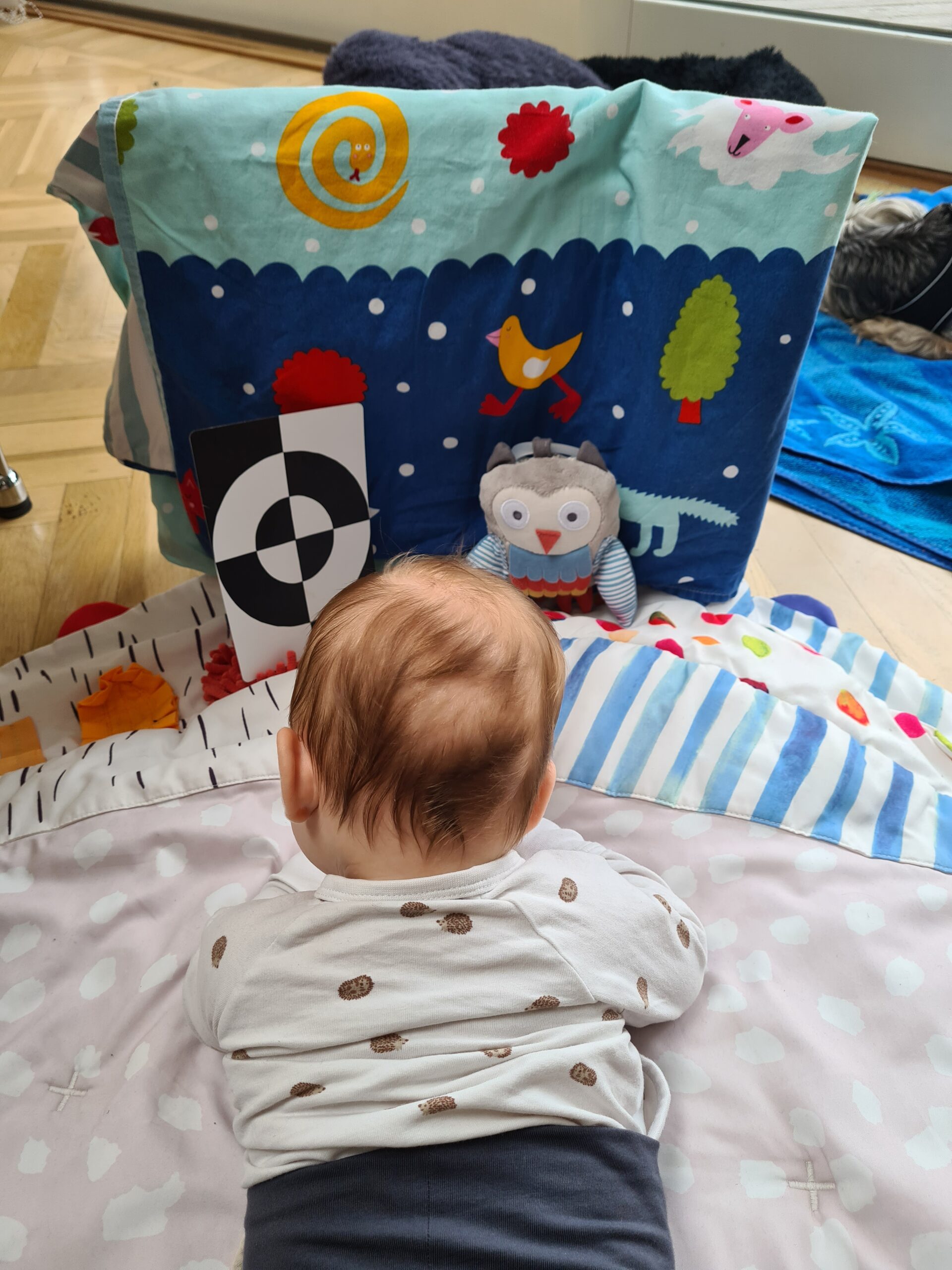The integration of sensory information (signals into the brain from the surroundings) and motor training (signals leaving the brain speaking to muscles) is important in activating both hemispheres of the brain. Sensory-motor integration bilaterally equal, is important for smooth integrated movements. This is required for balance and coordination. In situations where the infant has some kind of asymmetry or nerve injury (like a brachial plexus nerve injury), the neglected side is not turned on in the same way as the active side.
There are strategies to signal and train the neglected side. It is important to activate both sides so they have optimal function before sitting up.
Vibration is a tool that stimulates a specific pathway in the brain to alert the body that the part of the body stimulated belongs to them. This is an important tool to use when the infant is not using both sides of the body equally. A simple massage instrument with vibration (or at the very least an electric tooth brush) can be used to stimulate the palm of the hand and the sole of the foot, the joints on the non-dominant side (ankle, knee (NOT HIP), wrist, shoulder, and elbow). Other sensory information can be used like a soft brush, cold, warm, and tapping. They stimulate and travel in other pathways but vibration is the most important.

Another aspect of training has to do with synchronizing an inborn reflex which is inactivated in asymmetrical postures, conditions like torticollis and plagiocephaly. The eyes, the balance system and neck movements are coupled. When the infant is old enough to get eye contact, you engage their vision and have them turn their head to the right and to the left. Depending on the age of the infant, they may be most interested at looking and following your face, but eventually they will engage their eyes looking at a toy, particularly one that makes noise and is colorful. They should follow with they eyes and head, turning equally to right and left.

At six weeks the startle reflex starts to diminish as the Fencer reflex becomes more prominent. The infant with asymmetry may have a persistent Startle (Moro) reflex because as they turn the head to the non-dominant side they feel like they are falling. The Fencer reflex is initiated with the head turning to the side, the arm on the same side stretches out straight from the body and the opposite arm bends at elbow with hand near the head. This should be equal on the right and the left. With asymmetry like torticollis you may need to help your infant turn this on on the non-dominant side placing them in the correct position and using vibration on the arms. Tummy time increases with one minute per day.

Fencer reflex
Home care exercises for infants that present with tongue-tie issues can be read here.
At two months the baby should be able to lie on the stomach, balanced on the lower arms at its sides and the pelvis. They should not have a strong arch in their back or lose posture in a shoulder. The should lift the head and look side to side. They should not have a strong arch in the neck and fall over. They should not have an obvious curve in their trunk or neck. On their side they need support but should spend some time on their sides as well as the stomach and back. On the back the baby should rest comfortably feet on surface, no obvious curve in the trunk, no twisting over. They should have ease of movement with the head to the right and the left.

At 3 months, they should bring both the right and the left hands to the mouth, the hands should be playing together and their feet off the ground playing together. From this position you can roll them side to side, engaging vision.

They should lie in a stable position on the stomach and not fall over. They should support themselves well and equally on the left and right lower arms with proud shoulders. They should not lose support of either shoulder. This should be able to look to the right and left. When they look to the right extend the left arm and roll the baby onto its left side, this trains balance and prepares them for the next motor step. always do the exercises on both sides.

When the baby is on the back, you should be able to pull them to sitting, they should tuck their chin and bring the head up on their own. Otherwise you need to help them with chin tuck and minimal support to achieve this.
You should roll the baby from the back to the right and to the left sides. The will have difficulty to the non-dominant side, they usually throw out the arms like they are falling. This inhibits them from turning to that side, it affects balance and motor strength to the one side. Start early with this. Get their eyes to look to the side you want them to turn and roll them to that side. Do that on both sides. In side lying, you can hold the baby around the chest, under the arms and start to lift the baby up, you want to see that they engage the neck muscles. You can lift them up from this position. Do this on both sides.
It is important through the day to have the baby lie: on both sides, the stomach and back. Lying on the stomach and back they should be able to follow a face or a toy so the head turns fully to the right and the left. While lying on the side, have the baby look at toys to help activate the side that is up. At 3 months the baby should be reaching and holding things, here it is important to make sure the baby reaches with both hands. At three months get them to reach for a toy to the side you want them to turn. At this point, you can train with them on a Pilate’s boll. While on stomach, roll them gently side to side, forward and backward, and even have them on their side so they work with the non-dominant side. Head tilt is most difficult to resolve, so work with the ball and vision to get them to look up to the opposite side.
When lying on the stomach on a firm surface the baby should not tip over. When they have a dominant side it is common that they develop more strength to one side and do not have stability on the opposite side. The shoulder collapses and they fall over, this is not controlled. If you hold the pelvis stabile or at the knees, they train their core. You can give the weaker shoulder support by pushing from the elbow to the shoulder so they feel the correct position.
Throughout development it is important that the child does everything from the left and the right. By working to ensure this, you help to activate the core muscles so you inhibit the effects of an early asymmetry.
At 4.5-5 months the infant has their second motor milestone which is critical to development of the core muscles on the right and left sides of the spine, as well as stimulating the right and left halves of the brain.
This is difficult for infants with any kind of asymmetry including plagiocephaly. The infant is lying on the stomach, right elbow is held down in front of shoulder. The left knee is bent and held against the floor. Introduce a toy so the baby reaches up with the left arm and shifts its weight to the right side of the body. This activates the core muscles on that side of the body. Practice on both side.
At 4-5 months the baby lying on its back has the hands at the groin and eventually knees. They lay often with bent legs (sitting position) feet together, hands busy playing with a toy. The weight of the legs should enable them to turn to the side. Check they are skilled on both sides. They should be able to switch a toy between the right and the left hands.
Between 5 and 6 months while on stomach, the baby extends the arms and presses the body upwards. they may lie on their stomach lifting arms and legs from the floor (superman). on the back they bring the feet to the mouth (holding both feet), they turn easily to the sides.
Some babies sit now somewhat steadily. They can sit between your legs on the floor and you introduce an exciting toy so they pivot over your leg to reach the toy, eventually ending up on their knees. Tuck in the lower leg on the side they are turning to. This helps them practice turning the torso in an upright position.
at 7.5 months the infant on stomach should be pivoting their body to the right and the left, reaching for a toy with the closest arm. They should be able to lie on the side and play balancing on the side using one foot for balance.